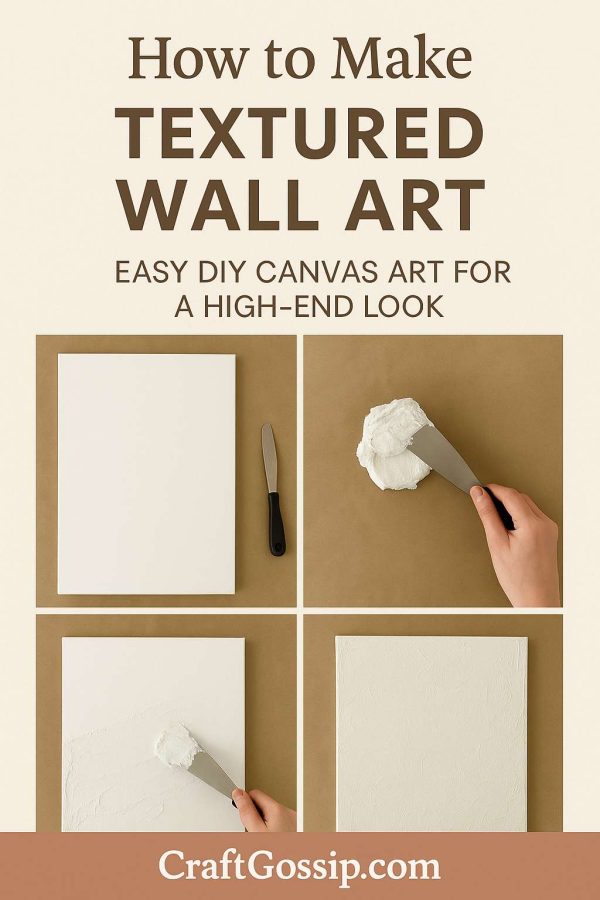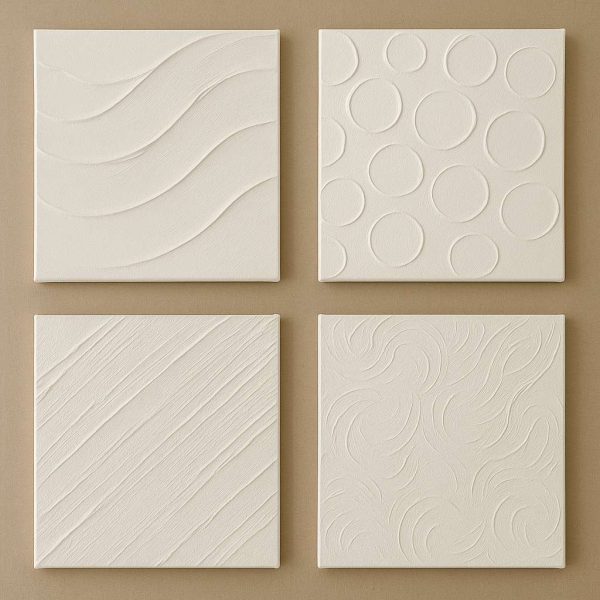
Using some driftwood found on a trip to the beach, and some old knobs found at the thrift store – make this very creative necklace or accessory holder.
Get the details here.
Ideas For DIY
by Vikram Goyal

Using some driftwood found on a trip to the beach, and some old knobs found at the thrift store – make this very creative necklace or accessory holder.
Get the details here.

There’s something magical about textured wall art. It’s got depth, personality, and that “I spent a fortune at a boutique gallery” vibe—without the boutique price tag. And the best part? You don’t need to be a trained artist to create it. If you can spread butter on toast, you can make this.
I made my first DIY textured canvas art on a rainy Saturday afternoon, with a cup of tea on the table and a curious dog sniffing my paint tray (Aloo was very unimpressed). A couple of hours later, I had a statement piece that looked like it belonged in a high-end décor magazine—except it cost me less than a takeaway dinner. Since then I have been obsessed and even made a Halloween Ghost one which you can see over here on our sister blog.
Whether you want a calming neutral piece for above the sofa or a bold modern texture for a gallery wall, this technique works for all styles.
Canvas – Any size you like; larger canvases make a bigger impact.
Joint compound, spackle, or lightweight plaster – This is what creates the texture. You’ll find it in the hardware store’s paint aisle.
Putty knife or palette knife – For spreading and sculpting the texture.
Acrylic paint – Choose your main colour(s). Matte paints give a modern, designer look.
Paintbrush or sponge – For applying your colour after the texture dries.
Drop cloth or old sheet – To protect your workspace.
Optional:
Spread out your drop cloth and set your canvas on a flat surface. This can get a little messy, so old clothes are a must.
Scoop some joint compound or spackle onto your putty knife. Spread it over the canvas in sweeping motions, as if you’re frosting a cake.
Depending on how thick you applied the texture, this can take anywhere from 12–24 hours. Patience is key here—painting too soon can ruin the effect.
Once dry, use acrylic paint to cover the texture. Neutrals like beige, ivory, or warm grey work beautifully for a minimalist look.
Once the paint is dry, your art is ready for its gallery debut—aka your living room wall.
Creating your own textured wall art is a satisfying, budget-friendly way to bring designer style into your home. The process is relaxing, the materials are affordable, and the result is a unique piece that looks far more expensive than it is.
So next time you’re tempted to scroll online for pricey wall décor, grab a canvas, some plaster, and your favourite paint colours—you might just surprise yourself with how chic your creation turns out.
